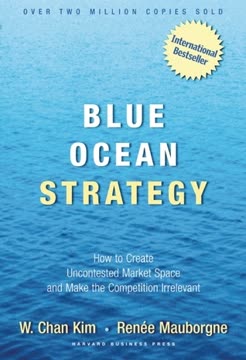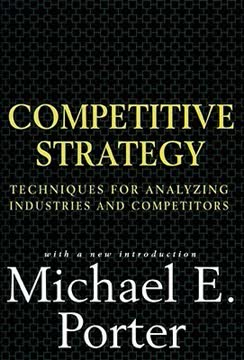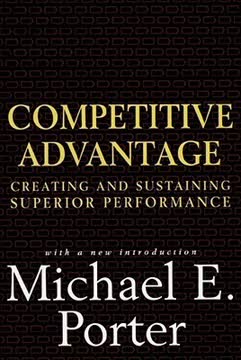Key Takeaways
1. Companies typically realize only 63% of their strategies' potential value
Our research suggests that companies on average deliver only 63% of the financial performance their strategies promise.
Strategy-performance gap. Most companies fall short of achieving their strategic goals, leaving significant value on the table. This gap between projected and actual performance is pervasive across industries and geographies. The root causes often lie in disconnects between planning and execution processes, as well as unrealistic assumptions and forecasts.
Unrealized potential. The inability to fully execute strategy represents a massive opportunity cost for organizations. By closing this gap, companies could potentially increase their financial performance by 60% to 100%. This unrealized value highlights the critical importance of improving both strategy formulation and implementation capabilities.
Invisible to leadership. Perhaps most concerning is that the causes of this strategy-to-performance gap are often invisible to top management. This lack of visibility makes it difficult for leaders to diagnose whether shortfalls stem from flawed strategies, poor execution, or both – leading to misguided attempts at improvement that fail to address root causes.
2. The strategy-to-performance gap stems from planning and execution breakdowns
What emerges from our survey results is a sequence of events that goes something like this: Strategies are approved but poorly communicated. This, in turn, makes the translation of strategy into specific actions and resource plans all but impossible.
Communication breakdown. The strategy-to-performance gap often begins with poor communication of strategic objectives throughout the organization. When strategies are not clearly articulated and disseminated, employees lack a shared understanding of priorities and goals.
Implementation challenges. Vague strategic direction makes it difficult to translate high-level objectives into concrete action plans and resource allocations. Without clear guidance, lower-level managers struggle to align their decisions and activities with overarching strategic goals.
Accountability issues. The lack of clarity around strategic objectives also makes it challenging to establish meaningful performance metrics and accountability mechanisms. When expected results fail to materialize, there is often no clear way to trace shortfalls back to specific decisions or actions, perpetuating a cycle of underperformance.
3. High-performing companies link planning and execution processes
As significant as the strategy-to-performance gap is at most companies, management can close it. A number of high-performing companies have found ways to realize more of their strategies' potential.
Integrated approach. Leading companies recognize that planning and execution are inextricably linked. Rather than treating them as separate activities, these organizations create clear connections between strategic objectives, operational plans, and day-to-day execution.
Simultaneous improvement. High performers work to elevate both their planning and execution capabilities simultaneously. This dual focus helps ensure that strategies are grounded in operational realities while execution efforts remain tightly aligned with strategic priorities.
Continuous feedback loop. By establishing robust feedback mechanisms, top companies can quickly identify and address gaps between planned and actual performance. This allows for rapid course corrections and prevents small deviations from snowballing into major strategic failures.
4. Keep strategy simple and concrete to drive consistent action
To start off the planning and execution process on the right track, high-performing companies avoid long, drawn-out descriptions of lofty goals and instead stick to clear language describing their course of action.
Clarity over complexity. Effective strategies are expressed in simple, actionable terms that can be easily understood and internalized throughout the organization. Avoiding abstract concepts and jargon helps ensure that employees at all levels can translate strategic objectives into concrete actions.
Actionable direction. High-performing companies provide clear guidance on what the organization will and will not do to achieve its strategic goals. This level of specificity helps align decision-making and resource allocation across the company.
Consistent communication. Simple, concrete strategic principles can be consistently communicated and reinforced, creating a shared language and framework for decision-making throughout the organization. This alignment is critical for driving coordinated action toward common objectives.
5. Challenge assumptions, not financial forecasts, for realistic planning
Separating the process of building assumptions from that of preparing financial projections helps to ground the business unit–corporate center dialogue in economic reality.
Focus on drivers. High-performing companies shift planning discussions away from negotiating financial targets and toward challenging the fundamental assumptions underlying those projections. This approach helps surface potential flaws in strategic thinking early in the process.
Fact-based dialogue. By grounding conversations in market realities and competitive dynamics, organizations can create more realistic and achievable plans. This fact-based approach builds trust between corporate leadership and business units while removing barriers to effective execution.
Avoiding political negotiations. Separating assumption-building from financial forecasting helps eliminate the tendency for planning to devolve into political negotiations over targets. Instead, the focus remains on developing a shared understanding of market opportunities and challenges.
6. Use a common framework to align business units with corporate strategy
Without a rigorous framework to link a business's performance in the product markets with its financial performance over time, it is very difficult for top management to ascertain whether the financial projections that accompany a business unit's strategic plan are reasonable and realistically achievable.
Shared language. Adopting a common strategic framework, such as the concept of profit pools, creates a shared language for discussing strategy across the organization. This alignment facilitates more productive conversations between corporate leadership and business units.
Linking markets to financials. A robust framework helps connect a business unit's market performance to its long-term financial projections. This linkage makes it easier to assess the reasonableness and achievability of strategic plans.
Consistent evaluation. With a common framework in place, corporate leadership can more effectively evaluate and compare strategic plans across diverse business units. This consistency improves resource allocation decisions and overall portfolio management.
7. Discuss resource deployments early to create feasible plans
Challenging business units about when new resources need to be in place focuses the planning dialogue on what actually needs to happen across the company in order to execute each unit's strategy.
Resource-strategy alignment. Early discussions about resource requirements ensure that strategic plans are grounded in operational realities. This alignment helps prevent the creation of unrealistic or unexecutable strategies.
Cross-functional collaboration. Involving diverse stakeholders in resource planning fosters cross-functional collaboration and surfaces potential implementation challenges early in the process. This approach leads to more robust and feasible strategic plans.
Leading indicators. By closely tracking resource deployments, organizations gain early insight into strategy execution progress. This allows for timely interventions and course corrections when plans begin to deviate from projections.
8. Clearly identify priorities to focus organizational efforts
Leading companies make these priorities explicit so that each executive has a clear sense of where to direct his or her efforts.
Explicit prioritization. High-performing companies clearly articulate a limited set of strategic priorities that will have the greatest impact on performance. This focus helps prevent the dilution of efforts across too many initiatives.
Cascading objectives. Strategic priorities are translated into specific action items and performance indicators at every level of the organization. This cascading approach ensures alignment from the C-suite to frontline employees.
Accountability mechanisms. Clear priorities are coupled with well-defined accountabilities and timelines. This clarity helps drive execution by making it easy for individuals to understand their specific responsibilities in delivering the overall strategy.
9. Continuously monitor performance to enable timely course corrections
High-performing companies use real-time performance tracking to help accelerate this trial-and-error process.
Real-time tracking. Leading organizations implement systems for monitoring key performance indicators in real-time or near-real-time. This enables rapid identification of deviations from plan and allows for quick interventions.
Leading indicators. In addition to tracking lagging financial metrics, high performers monitor leading indicators that provide early signals of strategic success or failure. This forward-looking approach supports proactive management.
Regular review cadence. Establishing a consistent rhythm of performance reviews – often weekly or monthly – creates opportunities for timely course corrections. These frequent check-ins help keep strategy execution on track despite changing market conditions.
10. Develop execution capabilities through talent management
Develop execution ability. No strategy can be better than the people who must implement it. Make selection and development of managers a priority.
Execution focus. High-performing companies recognize that strategy execution is a distinct capability that must be developed and nurtured. They invest in building the skills and processes necessary for effective implementation.
Talent prioritization. Leading organizations make the selection and development of execution-focused managers a top priority. This emphasis on talent ensures that the right people are in place to drive strategy implementation.
Incentive alignment. Performance management and compensation systems are carefully designed to reinforce strategic priorities and reward effective execution. This alignment helps motivate and guide employee behavior toward strategic objectives.
Last updated:
FAQ
What's HBR's 10 Must Reads on Strategy about?
- Collection of Articles: This book is a compilation of essential articles on strategy from the Harvard Business Review, featuring insights from renowned authors like Michael E. Porter and Clayton Christensen.
- Strategic Concepts Focus: It covers fundamental concepts such as competitive advantage, strategic positioning, and aligning activities within a company for long-term success.
- Practical Frameworks: The articles provide practical methodologies that managers can apply to develop and execute effective strategies in their organizations.
Why should I read HBR's 10 Must Reads on Strategy?
- Expert Contributions: The book features insights from leading thinkers in the field of strategy, offering valuable perspectives to enhance strategic management understanding.
- Timeless Principles: The concepts discussed are applicable across various industries, making it a relevant resource for both new and experienced managers.
- Actionable Tools: Readers gain access to frameworks and tools that can be implemented to improve strategic decision-making within their organizations.
What are the key takeaways of HBR's 10 Must Reads on Strategy?
- Strategic Positioning: Emphasizes creating a unique and valuable market position that competitors cannot easily replicate.
- Operational Effectiveness vs. Strategy: Highlights that operational effectiveness is necessary but not sufficient for competitive advantage; true strategy requires trade-offs and focus on unique activities.
- Activity Fit: Stresses that a company’s activities must fit together to reinforce one another, creating a sustainable competitive advantage.
What are the best quotes from HBR's 10 Must Reads on Strategy and what do they mean?
- "Strategy is the creation of a unique and valuable position.": Differentiating a company from its competitors by focusing on unique value propositions.
- "Operational effectiveness is not strategy.": Distinguishes between performing better than competitors and having a strategic plan for long-term success.
- "Fit drives both competitive advantage and sustainability.": Emphasizes the importance of aligning and interacting company activities for maintaining a competitive edge.
What is the concept of strategic positioning in HBR's 10 Must Reads on Strategy?
- Unique Value Creation: Involves creating a unique value proposition that addresses specific customer needs, setting a company apart from competitors.
- Trade-offs in Strategy: Requires making deliberate trade-offs about which activities to pursue and which to avoid, focusing on core strengths.
- Sustainable Advantage: Aims to achieve a sustainable competitive advantage that is difficult for competitors to replicate.
How does HBR's 10 Must Reads on Strategy define operational effectiveness?
- Performance Improvement: Refers to performing similar activities better than rivals, focusing on efficiency, quality, and speed.
- Not a Substitute for Strategy: While important, operational effectiveness alone does not constitute a strategy, as it can be easily imitated.
- Relative vs. Absolute Improvement: Leads to absolute improvements but often results in relative improvements that do not provide a competitive edge.
What is the significance of the "Five Competitive Forces" framework in HBR's 10 Must Reads on Strategy?
- Industry Analysis Tool: Developed by Michael E. Porter, it analyzes competitive dynamics within an industry.
- Understanding Profitability: Helps companies understand factors influencing industry profitability, like bargaining power and threat of substitutes.
- Strategic Decision-Making: Informs strategic decisions to enhance competitive position and profitability.
What is the Blue Ocean Strategy mentioned in HBR's 10 Must Reads on Strategy?
- Uncontested Market Space: Focuses on developing new markets where competition is minimal or nonexistent, allowing for innovation.
- Value Innovation: Involves offering customers a leap in value while reducing costs, leading to new products or services.
- Success Examples: Includes companies like Cirque du Soleil, illustrating how innovative thinking can lead to market advantages.
How does HBR's 10 Must Reads on Strategy address execution challenges?
- Aligning Strategy with Execution: Stresses the need to align resources and capabilities with strategic objectives for successful implementation.
- Monitoring Performance: Advocates for continuous monitoring of performance against strategic goals, with regular reviews and adjustments.
- Clear Decision Roles: Highlights defining clear decision-making roles to enhance accountability and streamline execution.
What is the RAPID Decision Model discussed in HBR's 10 Must Reads on Strategy?
- Roles in Decision Making: Outlines five key roles: Recommend, Agree, Perform, Input, and Decide, each with specific responsibilities.
- Clarity and Accountability: Assigns clear roles to avoid confusion and delays, ensuring everyone knows their responsibilities.
- Improving Decision Quality: Encourages collaboration and input from stakeholders, enhancing decision quality.
How can I apply the concepts from HBR's 10 Must Reads on Strategy in my organization?
- Assess Current Strategy: Evaluate your organization’s strategy against the book's principles, identifying areas for improvement.
- Implement Blue Ocean Thinking: Encourage creative thinking about new market opportunities using the blue ocean strategy framework.
- Establish Clear Decision Roles: Adopt the RAPID model to clarify decision-making roles, streamlining processes and enhancing accountability.
What are some common pitfalls in strategy execution mentioned in HBR's 10 Must Reads on Strategy?
- Lack of Clarity: Ambiguity in decision-making roles can lead to confusion and delays in execution.
- Poor Communication: Ineffective communication of strategy can result in misalignment and lack of buy-in from employees.
- Failure to Monitor Performance: Neglecting to track performance against strategic goals makes it difficult to identify shortfalls and take corrective action.
Review Summary
HBR's 10 Must Reads on Strategy is a highly regarded collection of articles on business strategy. Readers praise its comprehensive coverage of topics from competitive forces to vision-setting and strategy execution. The book offers valuable insights for both students and professionals, with Michael Porter's articles being particularly well-received. While some content may be dated, the core principles remain relevant. Readers appreciate the book's concise format and practical frameworks, though a few found certain articles less engaging or repetitive.
Similar Books








Download PDF
Download EPUB
.epub digital book format is ideal for reading ebooks on phones, tablets, and e-readers.







